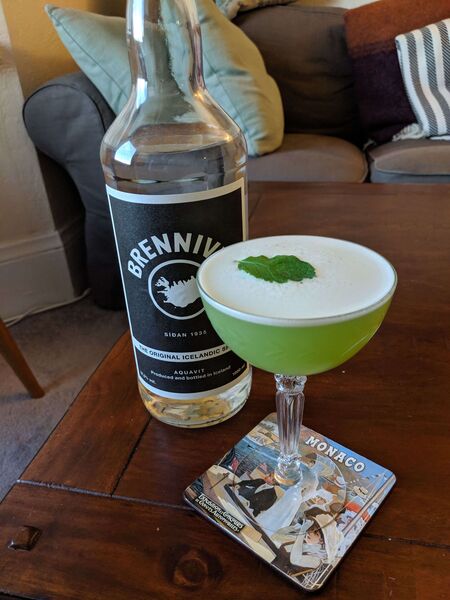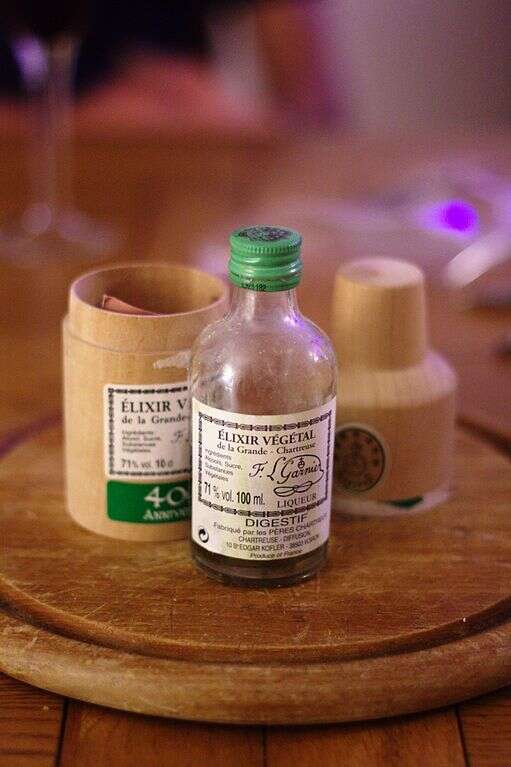It’s April Cools! We’re taking back April Fools.
When I was younger I had a strange relationship with alcohol, not because of any sort of trauma, but because I found it decidedly boring and disgusting to the taste. I didn’t drink in high school, didn’t enjoy parties in college, and didn’t care for tailgating or other sports-based events where drinking was common. I also never enjoyed wine—red is too tannic, white is just meh—and almost all beer tastes awful to me (lambic is a delightful exception).
This attitude may have been largely because (in America) young drinkers are idiots and the goal is to get plastered quickly and cheaply. Underage drinkers in the US only have access to cheap liquor, and sugary sodas are the standard mixer. People who grow up in these circumstances largely seem to acclimate to the idea that alcoholic drinks should taste awful.
With this attitude, I was surprised to find myself drawn to making cocktails.
From what I can remember, the first good cocktail I had was some variation on an old fashioned at a fancy restaurant. It was the kind of drink that is only good if it’s well made. This piqued my interest—and I still love a good old fashioned—but what convinced me to start making cocktails was the variety of flavors and surprising combinations that could be made into a drink.
For example, one of my favorite cocktails to make when trying to impress a friend mixes snap peas, mint, caraway (Brennivin), and yuzu lemon—a milder, Japanese variety of lemon that almost tastes like a mix between a Eureka lemon and a pear—into a bright green drink with a naturally foamy top layer (due to shaking the citrus).

“The Mendel,” my name for this cocktail whose central flavor is snap peas and mint.
But literally any flavor you want can be the star of a cocktail. I make a pecan-pie flavored drink with Rivulet’s amazing liqueur, some aged rum, egg white, and pumpkin-pie spice. I made a drink showcasing hibiscus with a syrup made from hibiscus flowers, cinnamon, allspice, vanilla beans, ginger, and sugar water. I’ve made a smokey carrot cocktail (Mezcal, carrot juice, balsamic vinegar, black pepper), and a mango lassi cocktail (gin, mango liqueur, plain yogurt, simple syrup).
The flavors, in my opinion, largely come from two sources: liqueurs and syrups. Liqueurs often start as purified ethanol spirit that is sweetened and infused with various ingredients, and then watered down to a low-alcohol content, often 15%, not much more than a glass of wine. Many world-famous liqueurs originated as bitter herbal remedies as far back as the 1600’s. This was the case for Chartreuse, named after the Grande Chartreuse monastery in the Chartreuse mountains north of Grenoble, France. These monks originally developed Chartreuse because they were trying to make the “elixir of long life.” Elon Musk should try it. Because Yellow Chartreuse is my absolute favorite liqueur, I made a little pilgrimage to their distillery in Voiron, France.

Elixir Vegetal, the herbal remedy still marketed as a cure-all tonic. I have a bottle as a novelty. They’re kept in a wooden outer bottle to prevent sunlight from making the liquid lose its color.
Anyway, point is liqueurs are delicious, even on their own or with tonic water. And there are liqueurs made from every conceivable fruit, peppers, birch bark, nuts, violet, you name it.
Syrups, on the other hand, allow you to infuse the flavor of anything by boiling it with equal parts water and sugar (or honey, or maple syrup). Tea, peanut butter, port, cardamom, whatever you want to experiment with, you can basically make the flavoring parts yourself and add them to a drink.
Beyond those two, texture is an interesting component for me personally. If you’ve ever had a whiskey sour or a pisco sour, you may know the nice foaminess in those drinks comes from “dry shaking” (shaking without ice) an egg white to emulsify and create a nice foam. It also tends to tone down harsher tannic flavors. You can achieve the same sort of effect with plain yogurt or the brine from a can of chickpeas. And then there are these techniques like “milk washing” and other forms of clarifying spirits, where you use liquids with special proteins to “wash off” the unwanted solids in another drink (like tannic solids in wine).
The rabbit whole goes a whole lot deeper. If you want to get into this and geek out a bit more on the science, check out Dave Arnold’s book Liquid Intelligence. It basically taught me all the advanced techniques I know, and many I have yet to muster the courage to try, like vacuum-infusing solids with liquor, using liquid nitrogen to freeze solids before muddling them, and plunging a RED HOT COPPER POKER into a drink to add flavor.

A page from Liquid Intelligence showing the red-hot copper poker technique.
I also enjoyed The Aviary restaurant’s cocktail book, which included a ton of interesting recipes, along with new ideas like spherification (which I didn’t realize I would hate until after I made it, mainly because I hate boba and it has a similar texture).
At 22 I hadn’t yet figured out why alcohol and drinking culture was unappealing. At 32, I think I finally understand that an activity, hobby, or subject appeals to me principally through its sense of quality and craftsmanship. For the quality of the finished work, yes, but also in the attention to detail, and stewardship of the workspace and tools with which that work is done. Like the apocryphal 30-second Picasso napkin art, I strive to practice my crafts (mostly programming, writing, math) so that quality becomes second nature. Focusing on tools, methods, and patterns of work are critical to that.
A bonus of all this is that cocktails become an easy point of conversation when I am stuck in a drinking-culture setting. I offer to “bartend” small parties of my friends so that I can have something to do besides drink. It gives me an excuse to leave an awkward conversation and a nice excuse to join a new conversation. It usually leaves an impression and people remember me. And it’s the best excuse to get my friends to visit me (I have all the ingredients!) so that I don’t have to go anywhere to enjoy myself.
If you want to get into cocktails but aren’t sure where to get started, I’d recommend getting the minimal tools to make a shaken cocktail (Boston shaker tins, Hawthorne strainer, and a measuring jig), watching a video on how to use the tins to shake a cocktail with ice, then go to fancy restaurants, try cocktails, write down the ingredients, and go buy them and try to experiment with recreating them at home. A good default recipe uses 2oz liquor, 3/4 oz – 1 oz sweet stuff (syrups and/or liqueurs), 1oz citrus juice, shaken over ice. Personally I default to a 1-1 honey-water simple syrup, and add a small pinch of salt to mixtures before I shake them. That’ll give you a solid but flexible base for which choices of particular ingredients covers the gamut of gimlets, daiquiris, sours (all that + egg), margaritas, and more.
Anyhow. The math content will return shortly. Enjoy!
Want to respond? Send me an email, post a webmention, or find me elsewhere on the internet.